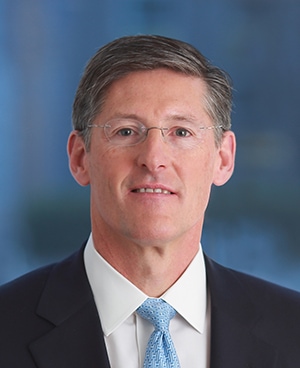Michael Corbat, CEO of Citi, discusses the advantages of leveraging an industry-leading technology platform with an unrivaled global footprint.

Global Finance (GF): As the most international of US banks, how will Citi be affected by any global economic slowdown?
Michael Corbat: Citi’s unique global footprint equates to multiple engines for growth across the firm and the capacity to capture opportunities anywhere we see them around the world. We have balance across our products and geographies, a leading presence in faster-growing emerging markets and a strong position in terms of regulatory infrastructure, capital and liquidity. This means we’re well-positioned to respond to changes in the macroeconomic environment and in our clients’ needs. And while we recognize that we’re in an uncertain macro environment, our focus continues to remain on executing for our clients, regardless of changing macro conditions.
GF: How much of an advantage is Citi’s global reach in terms of treasury and corporate services for multinationals?
Corbat: The Treasury and Trade Solutions (TTS) business, which forms the backbone of our Institutional Clients Group Franchise, is the clearest beneficiary of our unrivaled global network. Citi’s footprint cannot be easily replicated by our peers, and it gives us a competitive advantage in meeting the day-to-day cash management and working capital needs of our multinational corporate clients. We’re able to reach more developed and emerging markets than any of our peers, meaning we can be where our clients need us, and with respect to emerging market clients, are positioned to be their core operating bank as they grow beyond their home regions.
Because TTS is fundamentally a solutions-driven franchise, we’re also focused on enhancing the client experience through the development of new technologies and digital interfaces. We’ve built an industry-leading technology platform that when leveraged in combination with our global footprint provides our clients with seamless connectivity to the banking system around the world.
GF: Citi is a stable institution with a strong balance sheet. Can it afford to take more risks?
Corbat: Without a doubt, we’ve become a simpler, smaller, safer and stronger institution over the last several years. Today, we’re focused on executing our strategic priorities, which include delivering sustainable, client-led growth by deepening existing client relationships and leveraging our scale and investments in technology to enhance the client experience. The robustness of our businesses—and the investments we’ve made in our risk, compliance and audit processes—give us confidence in our ability to serve our clients without taking outsized risks that don’t align with our strategy. At the same time, we have a strong risk appetite framework in place that we’re very disciplined about, which allows us to prudently assess opportunities that fall within these parameters.
GF: Can Citi continue to boost its return on equity by using technology and innovation to make banking more efficient?
Corbat: How we use technology to enhance our client experience and the ways in which we deploy innovation across our franchises are integral to lowering our cost to serve so we can bend the cost curve and deliver sustainable positive operating leverage. In Citi’s institutional business, our development of new technologies and digital interfaces within TTS is only one example of how we’re innovating to make banking more efficient for our clients. On the other side of our house in our Global Consumer Bank, we’re significantly accelerating our speed to market with new digital products, features and capabilities by deploying new technology and using an agile operating methodology. This drive and capacity to innovate and use technology to our clients’ benefit will only strengthen our relationships and positively impact the performance of our businesses.



